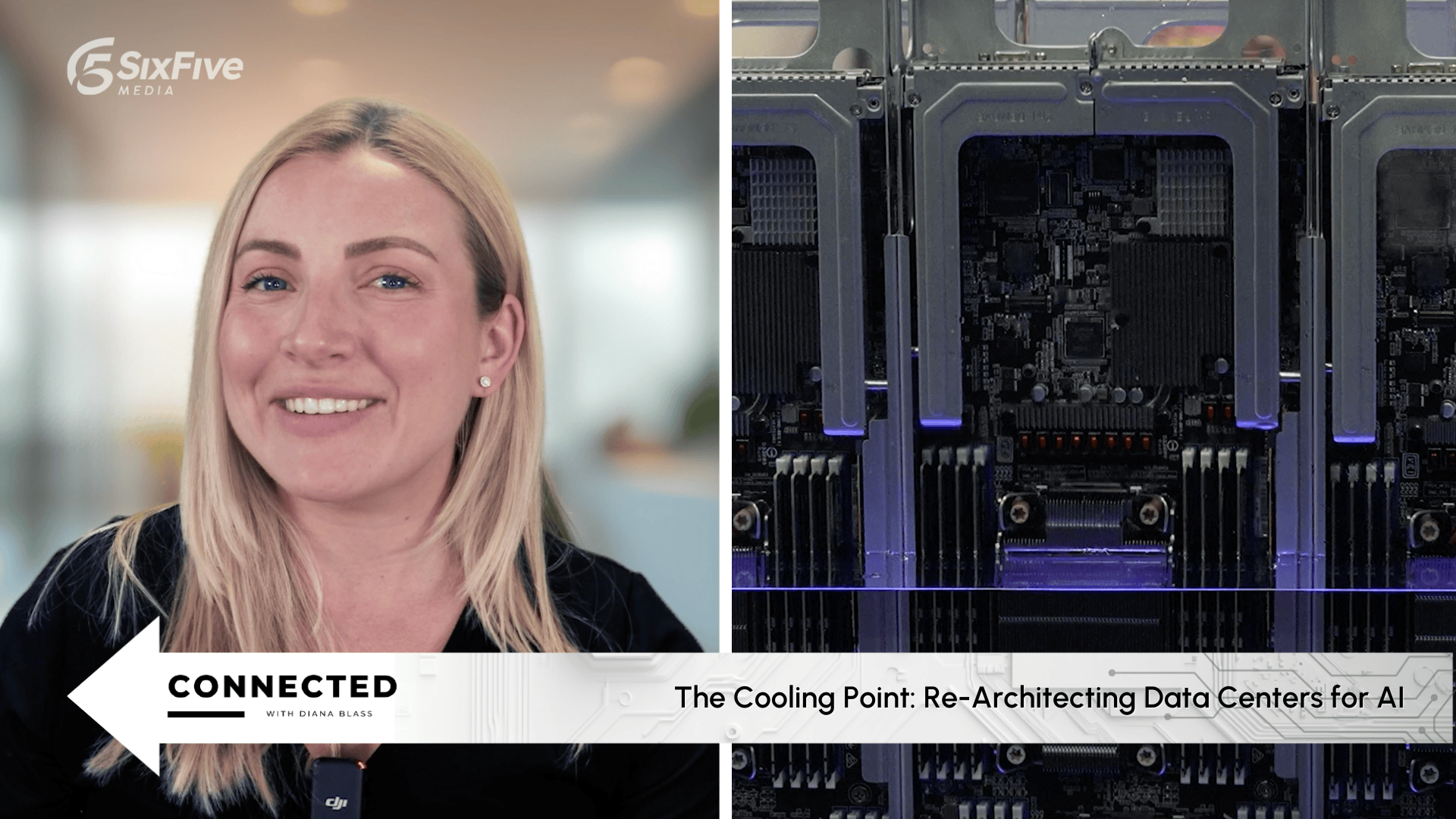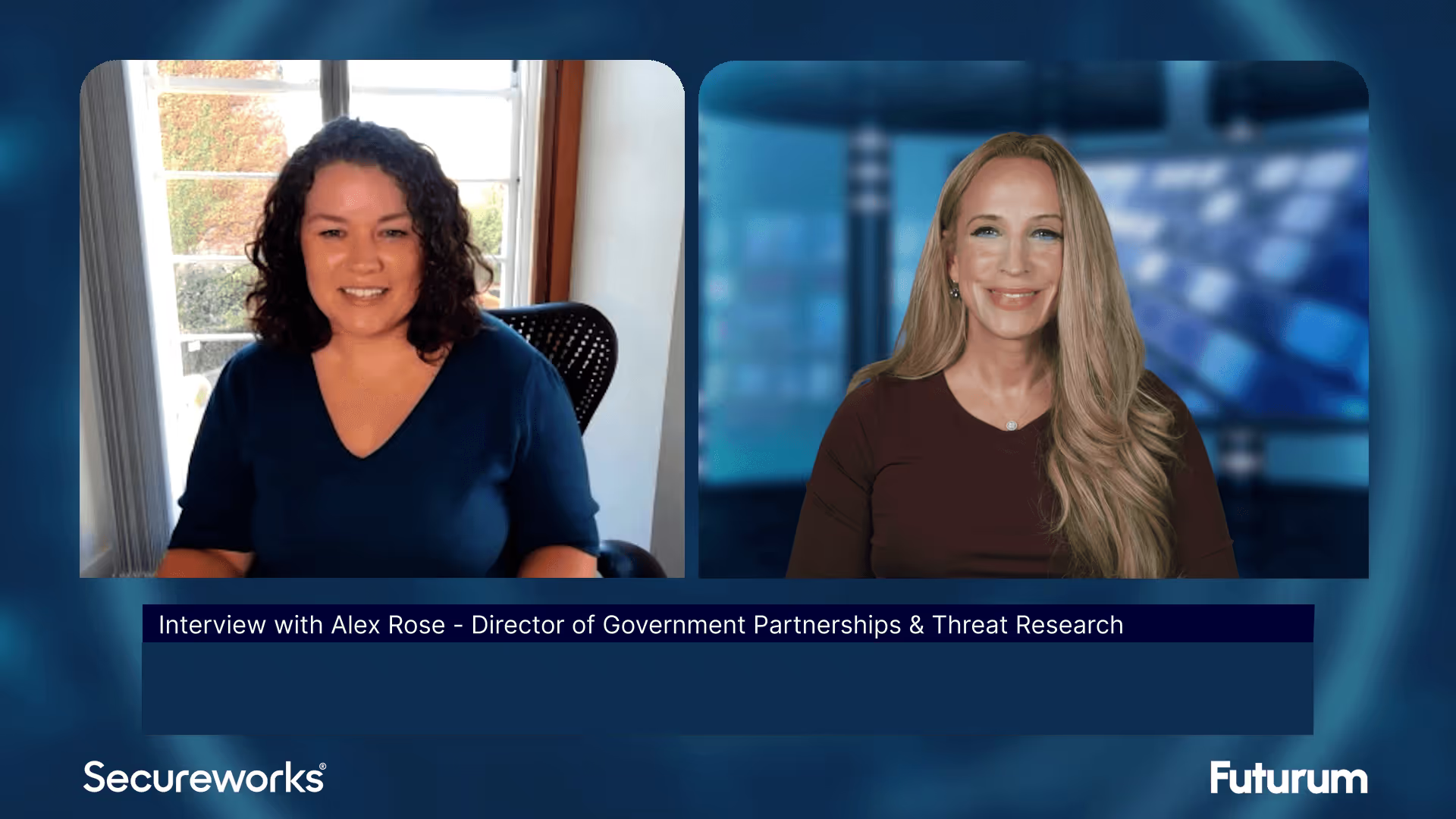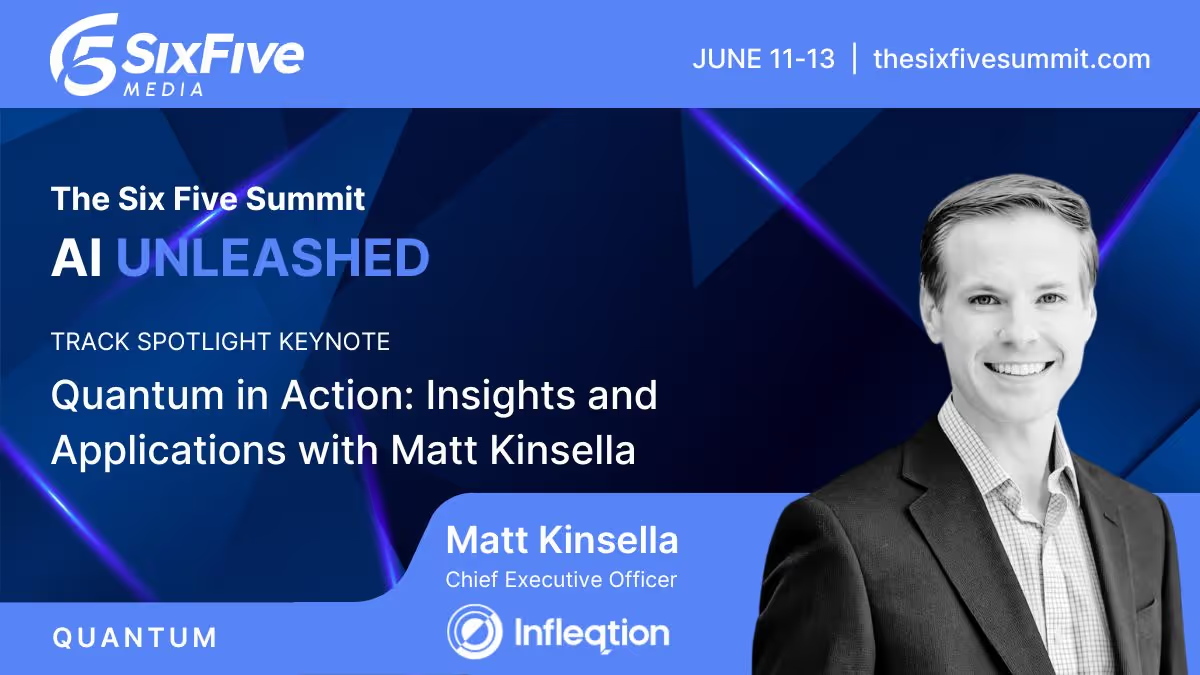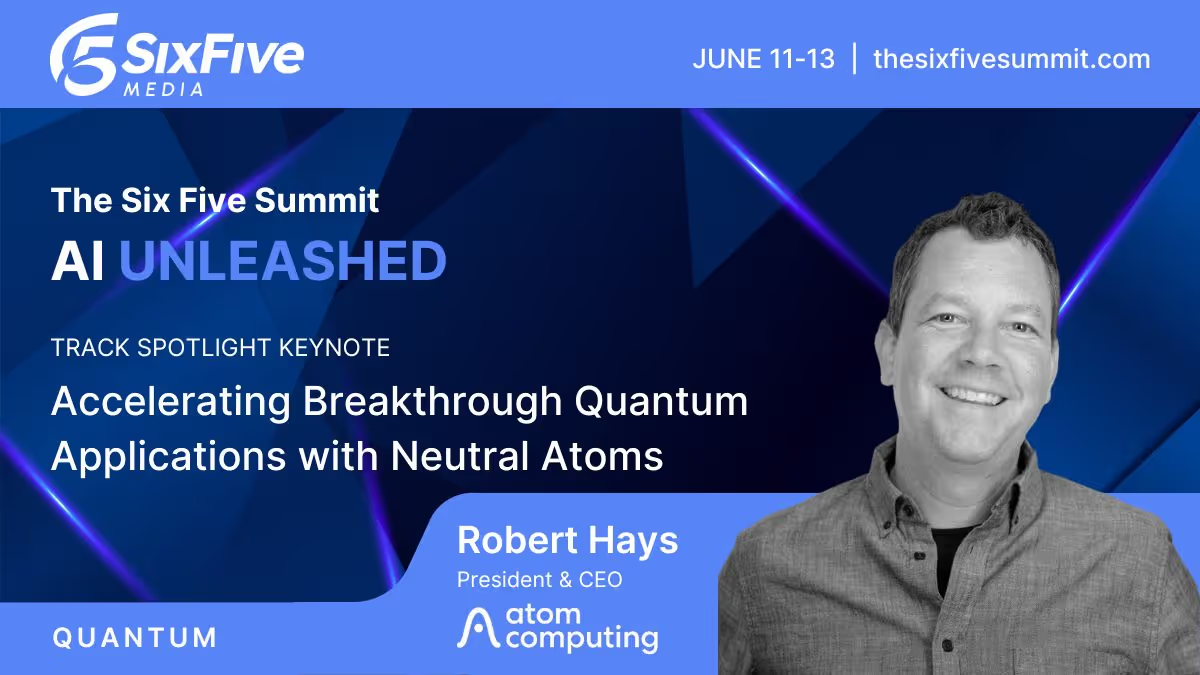Home
Why Infosys & Telstra Are Betting Big on Sovereign Al and Digital Transformation – Six Five Media
Why Infosys & Telstra Are Betting Big on Sovereign Al and Digital Transformation – Six Five Media
Anand Swaminathan, EVP at Infosys, joins host Patrick Moorhead to reveal how the company's new venture with Telstra and Versent is reshaping AI-driven cloud and digital transformation in Australia, setting a template for sovereign cloud innovation.
How might a new joint venture redefine cloud transformation and B2B telco services in Australia? 🦘
Host Patrick Moorhead is joined by Infosys EVP Anand Swaminathan, for a conversation on Infosys, Telstra, and Versent's new joint venture accelerating AI-enabled cloud and digital transformation for Australian enterprises. The discussion unpacks how the partnership leverages Infosys’ global AI and cloud expertise, Telstra’s trusted brand, and Versent’s local consulting talent to address critical issues of sovereign AI, data residency, and the evolving telco B2B landscape—key themes for organizations pursuing scalable, compliant digital innovation.
Key Takeaways:
🔹A Unique Strategic Alliance: This collaboration is structured to combine Infosys's global AI and cloud expertise, Telstra's trusted brand, and Versent's local consulting talent, differentiating it from conventional approaches and serving as a model for scalable, compliant digital innovation.
🔹Sovereignty and Data at the Forefront: The venture is meticulously designed to meet Australia's rigorous requirements for data residency and sovereign AI, offering a blueprint for balancing hyperscaler innovation with critical local compliance.
🔹Reinventing the Telco B2B Model: Insights into how the partnership aims to strategically reposition Telstra from a traditional connectivity provider to a comprehensive B2B innovation platform, leveraging the alliance to unlock new revenue streams in enterprise cloud, AI, and digital services.
🔹Unmatched Competitive Advantage: A look at how the combined global reach and expertise of Infosys, Telstra, and Versent create a uniquely defensible model, providing a competitive edge that is not easily matched by other systems integrators or hyperscalers in the market.
Learn more at Infosys.
Watch the full video at sixfivemedia.com, and be sure to subscribe to our YouTube channel, so you never miss an episode.
Or listen to the audio here:
Disclaimer: Six Five Media is for information and entertainment purposes only. Over the course of this webcast, we may talk about companies that are publicly traded, and we may even reference that fact and their equity share price, but please do not take anything that we say as a recommendation about what you should do with your investment dollars. We are not investment advisors, and we ask that you do not treat us as such.
Patrick Moorhead: The Six Five Podcast is back and we are talking telcos, business models and sovereign clouds. And I am joined with a friend of the Pod, Anand from Infosys. How are you doing?
Anand Swaminathan: I'm doing great, Pat. I'm very glad to be here.
Patrick Moorhead: Yeah, it's been a great run. We've had some great conversations. You know, we talk every couple months. I mean, I think the first time we chatted here on air was in Davos where we were talking a lot about the demands of sovereign AI clouds. That seemed to be the hot topic out there, among others. And then at Mobile World Congress it was really about enhancing the business models of the telcos and the carriers. And you know, the fun thing is this conversation is pulling the two together. Here you just inked an agreement with Telstra where you brought out a new joint venture where you're going to be accelerating AI enabled clouds digital transformation for Australian enterprises. And I think that hits those two topics that we hit at Mobile World Congress and also in Davos. And essentially it's combining Telstra's brand and Versent's cloud expertise and Infosys scale and what you've been able to accomplish with AI with your clients. So why don't we just dive right in here? So maybe first of all, congratulations on that, but hey, I want to hit first and it's important that these are in your words and not in my words. What was the motivation of structuring this as a JV instead of, let's say, a traditional outsourcing deal that you do a lot of and even an acquisition.
Anand Swaminathan: A great question, Pat. I think there are a couple of factors in play here that we were able to see quite ahead of time. One is that telcos across the world are going through B2B reset. The way they are focused on the business, to business customers and what they're offering to them and how they're delivering today is going through a rethink. And this is across the globe I see, and the opportunity there is for telcos to double down on connectivity and connectivity related products. And some of them are looking at partners like Infosys to support them on the other workloads, which will satisfy the customers, but also bring the connectivity revenues to them. In some cases they want to do it themselves, but in partnership with companies like Infosys. So either way, telcos are really getting back to the drawing board on B2B and looking at what is their core strength and how do they bring the core strength to play and how do they partner for the non core related workloads. So that is one factor at play. And the second factor that is at play is clearly across the world companies are looking at telcos as a potential platform to get their network, compute, storage and other AI related capabilities as well. And telcos have got the trust in these countries because one, they're regulated by the governments and second, they have been there for a long time earning the trust of the consumers. And second, however, these companies who want to get use telcos as the go to platform also want the American tech and innovation to flow through. But to bring these together is where we have positioned ourselves as a global SI with the license to do these things. Because we've got the experience and the competitiveness to say that let's bring together the brand and trust of Telco with the tech innovation that happens from the American tech or otherwise and with the Infosys investments in AI and global scale. So this trifecta was an interesting opportunity that was developing. So when you put these two factors together about the B2B reset going on and the trifecta that I just mentioned, there was no better opportunity than what we found with Telstra. Telstra was looking at the future strategy which they call as Connected Future 2030. We sat with Telstra and said why don't we bring this together? And that's why the JV came into play. In order for two companies to come together to address a strategic need like this, we felt it needs to be a joint venture. And Telstra was a very willing party to it. And off we are ready to go and looking forward to it.
Patrick Moorhead: Yeah, it's a really interesting deal and it's a modern deal in the sense that it's pulling on the best of what every party brings to the table. Everybody has a shared stake in its success and in the end a lot of the value is going to be delivered through AI to the end customer. So I want to focus on Telstra. I know you're not Telstra, but you know them very well here and you know we had talked about Telco is really redefining their B2B business models and they're offering the ability in this, you know, AI age where data residency is, is important, know every country and every region wants their own AI. How does this help redefine Telstra's role in enterprise connectivity and overall B2B services?
Anand Swaminathan: Yeah, I think where they found a strategic fit with us is they wanted to double down, as I said, on the core network offerings. You know, they wanted to make the network layer, the connectivity layer as a foundation of the future of AI and the digital society that they wanted to see in Australia. And they are a very established brand in Australia and New Zealand and outside as well. So we were going to come in and complement their strengths with our ability to provide the system integration skills and our ability to bring the power of AI that we have developed as part of our experience with global enterprises. So this is where Telstra found that the opportunity to partner with Infosys positions Telstra's network and connectivity as a potential backbone of the transformation, the AI transformation that is going to happen in Australia. That is where they found a strategic fit with us.
Patrick Moorhead: Yeah, this makes sense. So you're the glue that bridges the innovation between a lot of different companies and capabilities. Nvidia, Microsoft AWS with the local trust and compliance and data platform. Did I get this right?
Anand Swaminathan: I think so, Pat. Definitely. You mentioned a lot of partners and today in the joint venture, the entity that we are acquiring as part of this, where we are investing, 75% already has relationships with many of the partners that you mentioned and they have a phenomenal presence across the energy, utilities, the garment sector and the financial services business. So it's going to really give an opportunity for Infosys to have a reach into these customers in Australia and region particularly. Right. And but if you combine that with Infosys global expertise in working with the, the tech companies that you mentioned, because we are a big alliance partner with all these tech companies taking their products and services to many of our customers across many verticals, it really brings a phenomenal fit in terms of actually combining the strengths of both these organizations and delivering great value.
Patrick Moorhead: That makes sense. So I'm sure a lot of people were trying to come in and help Telstra achieve their AI vision here. And so sometimes I get a lot of questions, right? I mean I travel a lot, I'm talking to a lot of different companies. Sometimes you get the question, wait a second, why don't, can't the hyperscalers do all of this? I mean I, I don't always ask a question I know the answer to, but I think it's important for you to explain like you work with these partners, but you offer a lot more than this.
Anand Swaminathan: Absolutely Pat. As we have discussed many times foundation models are sufficient, I'm sorry, are necessary but not sufficient to drive enterprise value. The excitement of AI does not equate to enterprise value. These are two different things. Now where Infosys fits in is to actually bring the tools of AI and the power of technology to actually deliver the final mile outcome, which is in most cases the most difficult thing to do because enterprises are plagued with traditional technologies and multiple tools and processes that don't really efficiently work. Where we come to support because of our understanding of these industries and with our domain expertise is how do we bring the right tools to actually deliver the final value. Right. And that is why I think transactions like this, a global system integrator like Infosys, who has got the domain expertise, who have got that hands on knowledge and understanding of how to wire these tools together, is more appealing to telcos. But let me state this, we cannot do any of this alone. And that is something that we have been extremely clear about over many decades. Our ability to bring the final value is a function of who we are partnering with and that spans across the hyperscalers, the private cloud companies, the security, the OEM providers as well as the telcos. Right. And our partnership mindset, I think, is what positions us quite uniquely in this space because we want to really embrace the right set of players to bring the final value.
Patrick Moorhead: Yeah, that makes total sense. And also we're not talking about, it's not a clean slate of tech. There's a lot of investment that's been put in tech and sometimes it's not, okay, we're going to throw away this investment and move to new stuff. We have to leverage what is architecturally good for this solution into the future and then build value on top of that. And in the category, SIs are the only ones that are able to do that. But I did want to talk about, okay, there's a lot of sis out there that I'm sure wanted to do this and I've seen a lot of them try telco partnerships like this, but nothing this broad. What makes you different? And I mean, why did, why did you get this deal?
Anand Swaminathan: Great question, Pat. I think first, brick by brick, we have built a phenomenal telco practice at Infosys. We have one of the largest businesses across telcos in terms of not just selling to them, but actually selling with them in the market and also consuming a lot of their technology for our own purpose. So we have a quite detailed understanding of how the telcos evolved their products and services and how they fit in the market. So that gives us a deep understanding and the license to actually engage with our telco C suite on this kind of a discussion. Second, if you look at Infosys and our investments in AI and how we are looking to refactor the whole talent and the services business. It really is an interesting proposition to telcos because they want to partner with somebody who they know has the vision for the future and the ability to succeed. And I think these are the two factors that came into play now specific to Telstra. We have been in Australia for many years and we have had a great relationship with Telstra and this is like another foundation block that we are building on. A phenomenal foundation that we already have. But we are looking to do this with many other telcos in the world. And this is the first of its kind where a telco for its entire enterprise suite of products and services and other requirements are actually looking at a provider to provide support in a full, in a full gamut of services. With a full gamut of services.
Patrick Moorhead: Yeah, that is a big deal. And data residency is just one of these capabilities across an entire data state and then leveraging AI to light that up to in the end deliver value to those end businesses of Telstra's customers.This makes sense. So I've done a few JVs in my life, been part of it. Some of those, you know, worked out really well. Some of those were challenged and they don't always start. You're not always 0 to 100 on day one. And I'm curious, talk to me about the near term execution plan. How quickly will end customers see these joint solutions in the market in Australia?
Anand Swaminathan: First, Pat, we are still going through the approval process. You know, we have to wait for the regulatory agencies in Australia to approve the transaction. Right. So you know, that's still ongoing. But our first order of business is to ensure that the phenomenal talent that is coming over to Infosys or coming over to this joint venture we are able to retain and we are able to continue with them. One of the big pull factors for us was the deep talent pool that was built by Telstra and Versant. In this case Versant is the name of the entity that was built over many years. So that's number one. Number two is our customers and business continuity. You know, Versant has done phenomenal work in Australia and we want to ensure that we are able to continue that with zero friction in terms of go to market or in terms of services and delivery. Third is about how we combine the strengths of Versant with the global expertise and investments we are making in AI and Telstra's connectivity and core business in bringing this together. On that we are at the drawing board now in terms of deeply ensuring that our plants can actually execute well. So we are going through that process. But this is a question that's currently at the forefront of our mind. And as you said, it's really important to get this right in terms of making this successful. But given the players I'm working with in Telstra and in Versend and the way it is coming together, I'm extremely bullish that this will be a transaction that'll sort of be the template for many telcos to consider in the future.
Patrick Moorhead: Yeah, I do want to talk about that. I mean, it seems very replicable and we talked a little bit about it in the previous discussions. But I'm already thinking about telcos all over the world that I think are having, I wouldn’t call them challenges, but more opportunities to get out of the quote unquote, dumb pipes and into value added services. So you do think this could evolve into something that, that may be a global template or blueprint for, for other regions?
Anand Swaminathan: Yeah, I think so, Pat. In, in many ways that are, if you unpack the transaction, JV is just a vehicle. You know, it can be any kind of vehicle, it can be a strategic partnership, it can be a different type of relationship with the telcos. And like I said, the telcos are deeply rethinking the B2B strategy and we want to be there in the table with them in terms of, in the room with them in terms of helping them to rethink the B2B market and make them succeed in that market. We really think there is an opportunity for telcos to really drive the B2B business and revenues up. And it's naturally coming to them now because of the data sovereignty needs, the need to have a trusted player within the sovereign nation. And therefore they are going to become a central point of delivering technology and services and therefore be part of the AI transformation of the respective nations. And we want to be part of that. And at the same time, they can succeed if they can choose the right partnerships with the right global si, as well as to ensure that they bring the right tech companies into play. And what we are out here to say is, one, listen, a company like Infosys is ready for these types of transactions. And second, we have the appetite and the shared vision to make this a success. So I'm quite optimistic that there'll be a lot of different telcos with whom we will start working on these lines. The transaction, the relationship can have different contours to it, but eventually the principles on which it will stand will remain same, like the ones that we discussed.
Patrick Moorhead: Yeah, great stuff. And hopefully we can talk about it at next year's Mobile World Congress or, or before if you'd like. It's. It's not up to me, it's up to you.
Anand Swaminathan: Yeah, no, absolutely, Pat. I'm sure we'll catch up many times before that. Definitely during the World Economic Forum and the Mobile World Congress, but much before. Either if you come to Seattle or if I come to Austin.
Patrick Moorhead: Now that sounds great. Anand, I just want to thank you for your time for doing this. It. I love our pre conversations, our run up strategic conversations. But what made this most interesting and I think for the viewers is the continuum of World Economic Forum and Mobile World Congress and how these two megatrends and maybe we'll say three if it's carriers who are looking to do more with their pipes with value added services. But anyways, I appreciate your time.
Anand Swaminathan: Thank you. Thank you, Pat. Always a pleasure.
Patrick Moorhead: All right, that is Anand from Infosys and we are talking about the Infosys Telstra joint venture. It's more about cloud consulting. That's easy, right? Not really. That's hard too. But it is a blueprint for how telcos can reset their enterprise businesses in the age of sovereign AI and data residency. So thank you for tuning in here, folks. Hit that subscribe button. Hit all of our Infosys content not only here on the Six Five Media but on Moor Insights and Strategy website, my website. Take care. Bye bye.
MORE VIDEOS

The Cooling Point: Re-Architecting Data Centers for AI - Six Five Connected with Diana Blass
Avi Shetty, Hecheng Han, Dr. George Zhang, Neil Edmunds, John Griffith, Josh Grossman, and Francesca Cain-Watson join Diana Blass to discuss the evolution of liquid cooling in AI systems, exploring design tradeoffs, architectures, and deployment strategies.

The Six Five Pod | Ep. 288: OpenAI’s Valuation Debate, Marvell’s Network Bets, and the Next Bottlenecks for AI Growth
This week, Patrick Moorhead and Daniel Newman unpack why today’s AI moment feels less like the endgame and more like Netflix’s DVD-by-mail phase—the very beginning of a transformation that will redefine the tech industry. They dig into soaring AI valuations and the growing debate over whether today’s leaders signal durable platforms or bubble dynamics, then shift to what really matters under the hood—AI infrastructure, with a sharp focus on networking and memory, informed by insights from Marvell’s Industry Analyst Day. This episode also breaks down recent market moves across major tech players, before closing with a forward-looking take on where AI is headed and what it will take to stay competitive as the pace of change continues to accelerate.

Building Enterprise-Ready Agentic AI with Search - Six Five On The Road
Steve Kearns, GM of Search Solutions at Elastic, joins Nick Patience to share how Elastic is enabling enterprises to move from RAG to agentic AI, solving operational challenges, and powering the next generation of autonomous workflows.
Other Categories
CYBERSECURITY

Threat Intelligence: Insights on Cybersecurity from Secureworks
Alex Rose from Secureworks joins Shira Rubinoff on the Cybersphere to share his insights on the critical role of threat intelligence in modern cybersecurity efforts, underscoring the importance of proactive, intelligence-driven defense mechanisms.
QUANTUM

Quantum in Action: Insights and Applications with Matt Kinsella
Quantum is no longer a technology of the future; the quantum opportunity is here now. During this keynote conversation, Infleqtion CEO, Matt Kinsella will explore the latest quantum developments and how organizations can best leverage quantum to their advantage.

Accelerating Breakthrough Quantum Applications with Neutral Atoms
Our planet needs major breakthroughs for a more sustainable future and quantum computing promises to provide a path to new solutions in a variety of industry segments. This talk will explore what it takes for quantum computers to be able to solve these significant computational challenges, and will show that the timeline to addressing valuable applications may be sooner than previously thought.




